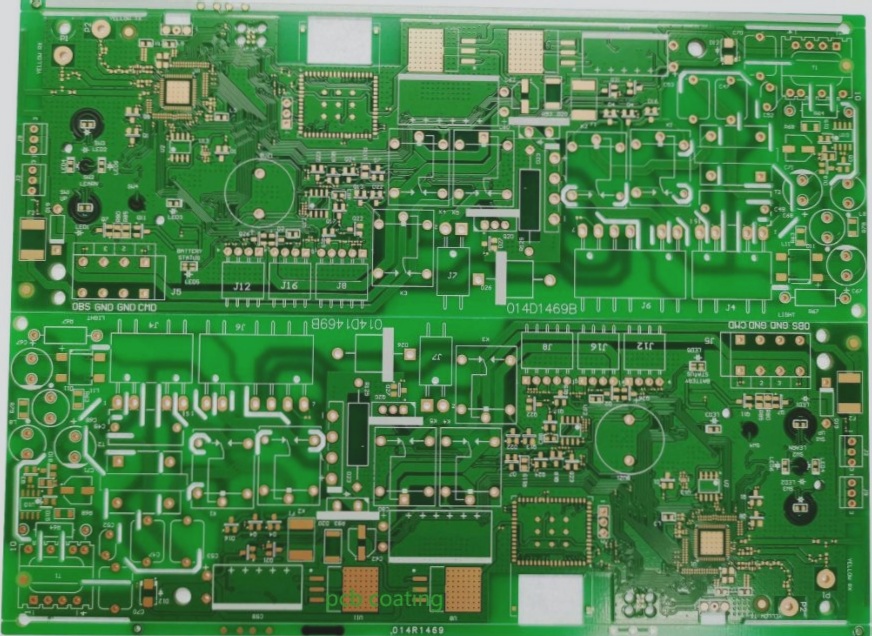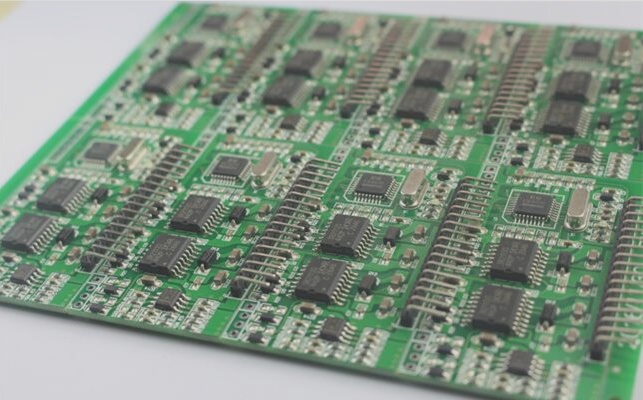Good surface wettability is essential. This entails ensuring that the molten solder spreads uniformly across the metal surface to be welded, forming a complete, uniform, and continuous solder coating. The contact angle should not exceed 90 degrees.
The correct amount of solder is crucial; it should neither be excessive nor insufficient.
Adequate preparation of the welding surface is necessary. The welding joint surface should be complete, continuous, and smooth, although a bright appearance is not mandatory.
Precise solder joint positioning is paramount. The deviation of the component’s welding end or pin on the pad should fall within the specified range.
Issues arise when the contact angle between the solder and the metal surface exceeds 90 degrees.
Post-welding, detachment of the pad from the PCB surface occurs.
Misalignment of the component’s end, either obliquely or vertically, in relation to the pad is observed.
Undesirable connections between solder joints or between solder joints and adjacent conductors are detected.
Electrical isolation between the welding end or pin and the pad may occur after soldering.
Protruding burrs on solder joints are identified, although they do not make contact with other conductors or solder joints.
Solder balls may adhere to the printed board, cathode film, or conductors during welding.
Various aperture sizes appear at the welding positions.
Deviation of the solder joint from the predetermined position in the horizontal, vertical, or rotational plane is noted.
Visual inspection, aided by magnification of 2~5 times, is conducted to assess PCBA solder joint quality.
Quality inspection procedures post-PCB welding are carried out.
Repair processes are implemented to rectify local defects in surface-mounted components.
During the mounting of surface mount components, inspections are conducted to detect missing, misplaced, mis-mounted, or damaged components.
Visual inspection and optical equipment inspection methods are commonly employed in SMT inspections. Either visual inspection alone or a combination of both methods is utilized. While both methods can inspect 100% of the products, relying solely on visual inspection may lead to fatigue among inspectors, potentially compromising thoroughness. Hence, it is imperative to establish a balanced inspection and monitoring strategy, ensuring quality process control points are in place.
To guarantee the smooth operation of SMT equipment, it is essential to reinforce quality inspections at every processing stage to monitor operational status. Quality control points are established after critical processes. These points are typically located at:
1) PCB Inspection
a. Checking for board deformities.
b. Verifying pad oxidation.
c. Assessing surface scratches.
Inspection Method: Visual inspection according to predefined standards.
2) Screen Printing Inspection
a. Confirming complete printing.
b. Detecting any bridging.
c. Ensuring uniform thickness.
d. Checking for edge collapse.
e. Verifying printing alignment.
Inspection Method: Visual inspection or magnified inspection as per standards.
3) Component Placement Inspection
a. Verifying component mounting positions.
b. Identifying any component chip-outs.
c. Checking for incorrect components.
Inspection Method: Visual inspection or magnified inspection as per standards.
4) Reflow Inspection
a. Evaluating component soldering conditions for defects such as bridging, tombstoning, displacement, solder balls, and false soldering.
b. Assessing solder joint conditions.
Inspection Method: Visual inspection or magnified inspection as per standards.
The correct amount of solder is crucial; it should neither be excessive nor insufficient.
Adequate preparation of the welding surface is necessary. The welding joint surface should be complete, continuous, and smooth, although a bright appearance is not mandatory.
Precise solder joint positioning is paramount. The deviation of the component’s welding end or pin on the pad should fall within the specified range.
Issues arise when the contact angle between the solder and the metal surface exceeds 90 degrees.
Post-welding, detachment of the pad from the PCB surface occurs.
Misalignment of the component’s end, either obliquely or vertically, in relation to the pad is observed.
Undesirable connections between solder joints or between solder joints and adjacent conductors are detected.
Electrical isolation between the welding end or pin and the pad may occur after soldering.
Protruding burrs on solder joints are identified, although they do not make contact with other conductors or solder joints.
Solder balls may adhere to the printed board, cathode film, or conductors during welding.
Various aperture sizes appear at the welding positions.
Deviation of the solder joint from the predetermined position in the horizontal, vertical, or rotational plane is noted.
Visual inspection, aided by magnification of 2~5 times, is conducted to assess PCBA solder joint quality.
Quality inspection procedures post-PCB welding are carried out.
Repair processes are implemented to rectify local defects in surface-mounted components.
During the mounting of surface mount components, inspections are conducted to detect missing, misplaced, mis-mounted, or damaged components.
Visual inspection and optical equipment inspection methods are commonly employed in SMT inspections. Either visual inspection alone or a combination of both methods is utilized. While both methods can inspect 100% of the products, relying solely on visual inspection may lead to fatigue among inspectors, potentially compromising thoroughness. Hence, it is imperative to establish a balanced inspection and monitoring strategy, ensuring quality process control points are in place.
To guarantee the smooth operation of SMT equipment, it is essential to reinforce quality inspections at every processing stage to monitor operational status. Quality control points are established after critical processes. These points are typically located at:
1) PCB Inspection
a. Checking for board deformities.
b. Verifying pad oxidation.
c. Assessing surface scratches.
Inspection Method: Visual inspection according to predefined standards.
2) Screen Printing Inspection
a. Confirming complete printing.
b. Detecting any bridging.
c. Ensuring uniform thickness.
d. Checking for edge collapse.
e. Verifying printing alignment.
Inspection Method: Visual inspection or magnified inspection as per standards.
3) Component Placement Inspection
a. Verifying component mounting positions.
b. Identifying any component chip-outs.
c. Checking for incorrect components.
Inspection Method: Visual inspection or magnified inspection as per standards.
4) Reflow Inspection
a. Evaluating component soldering conditions for defects such as bridging, tombstoning, displacement, solder balls, and false soldering.
b. Assessing solder joint conditions.
Inspection Method: Visual inspection or magnified inspection as per standards.



